The Grow Monster loves sunflowers and is growing them from seed using both containers and from volunteers that have come up from the year before. However, whether the seed started in the container or volunteered to sprout somewhere in the garden, you probably have a better place in mind and need to transplant it.
The Grow Monster has identified the following steps on how to transplant sunflowers:
- Step 1: Know the risks of transplanting a sunflower
- Step 2: Pick a location with sun
- Step 3: Prepare the hole and soil
- Step 5: Transplant the Sunflower
- Step 6: Provide Water, Support, and Protection
Step 1: Know the Risks of Transplanting a Sunflower
The most ideal scenario is to have a seedling started in the location where it will be grown, which requires no transplanting at all. The second most ideal scenario is to transplant the sunflower when it is still small after its first true leaves have sprouted. The scenarios become less favorable the older the sunflower becomes. The least favorable scenario being the transplant of a fully-grown sunflower while it is in full bloom. It is generally not advisable to transplant larger sunflowers, especially if they are already blossomed or ready to blossom. Larger sunflowers require their larger root systems to remain intact to both anchor the plant and pulling nutrients out of the soil to support the plants tall heights and blooms. Any damage to the delicate root system of an adult plant could result in its loss. So it is important to be mindful that the failure rate increases with older, larger plants. The shock could be too much. Their tap roots develop early and need that tap to maintain their heights, otherwise their growth might be stunted from the move.
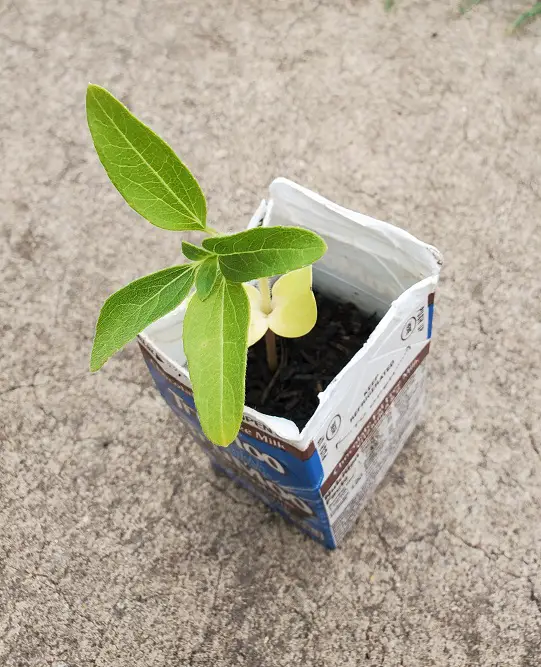
Sunflower seedling in pot. 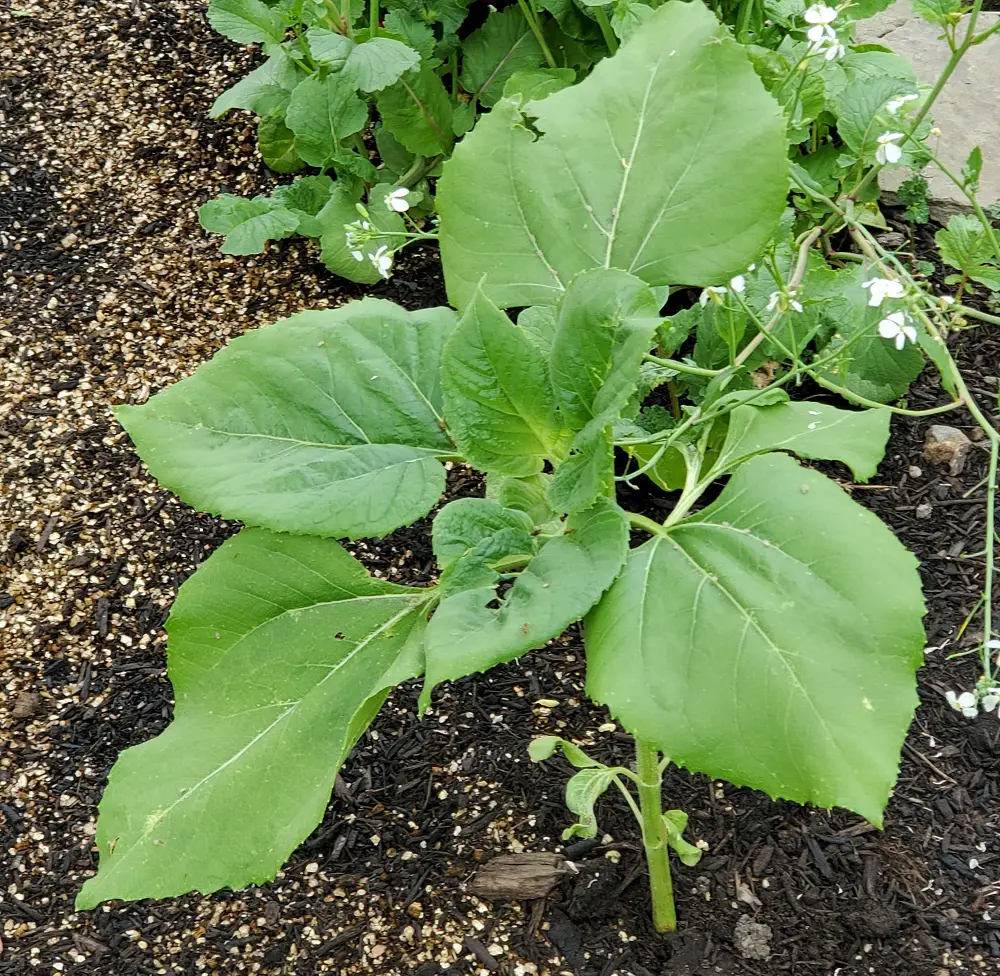
Sunflower seedling from seed that fell from our sunflowers last year.
Step 2: Pick a Location with Sun to Transplant Your Sunflower
Sunflowers do their absolute best and will grow to their greatest potential in full sun, hence the word ‘sun’ in ‘sunflower’. At least choose a place with either full sun, or half a day (about six hours) of sunshine. If you are transplanting the sunflower in close proximity to other sunflowers, be sure to pick a location where the sunflower is no less than 2 to 2.5 feet apart. Depending on the variety, it will need plenty of room to grow. The Grow Monster has had success growing sunflowers on the side of the house receiving half a day’s worth of sun. From The Grow Monster’s experience, sunflowers seem to be growing better in the morning sun (east / south east side) versus the evening sun (west / southwest side) of the house. We’re not entirely sure yet if it is factor of the sun exposure where the east/southeast is getting more sun exposure (an extra hour?) in the morning, or if it is a factor of the soil/compost being used. Though, it is interesting to watch the sunflowers slowly shaking their heads from east to west as they track the sun throughout the day. They call this phenomena ‘Heliotropism’, and many plants will exhibit this interesting behavior to maximize the full solar potential of the sun.
Step 3: Prepare the Hole and Soil for the Transplant
Before you dig out your old plant or pull the plant out of its current container, you want to prepare the soil area for transplant. You will want to dig a much larger hole than the current area being occupied by the root system of the current plant. If you gently poke around the base of the current sunflower using a trowel, you will get an idea how far out from the center the roots extend. You will want to dig a hole that is about 2/3 larger in diameter. For example, if the root system extends 3 inches around the plant which is a 6 inch diameter, then you will want to dig a 10 inch diameter hole. The depth of the hole will also depend on the root ball and can be adjusted during the transplant. For sunflowers, you will also want to dig a slightly deeper hole than you would for normal flowers. This is because the sunflowers have large taproots (some to go as far as 3 feet deep on mature plants) that are required to anchor themselves to the ground. For the best results of a transplant, You will want to have an adequate amount of compost available to fill in the hole during the transplant step. Sunflowers are heavy feeders due to their size. Especially for areas that are clay, you will want to use nutrient-rich compost that will both nourish the sunflower’s root system, while providing adequate amount of moisture to the transplanted root systems. For sunflowers, you want the roots to grow quickly into the nutrient-rich soil to become established and provide the anchorage needed to sustain the growing sunflower. Having a larger and deeper hole with compost available to fill in the difference will provide that for the sunflower. Place some of the compost into the bottom of the hole and set the rest aside for the transplanting step.
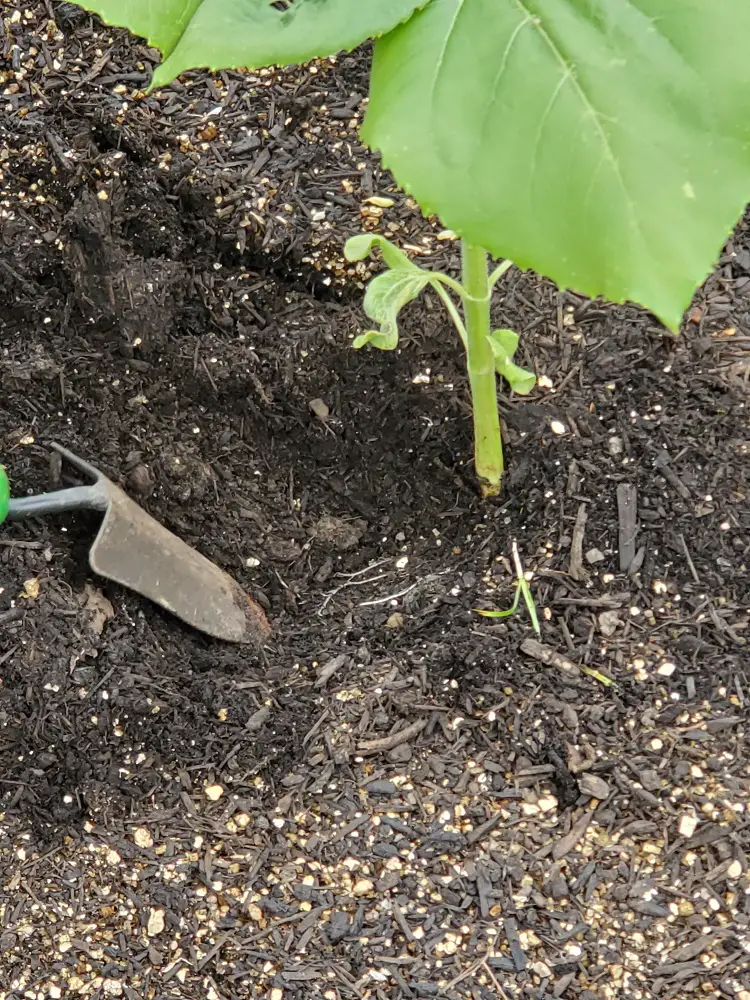
Take trowel and move dirt to see sunflower roots. 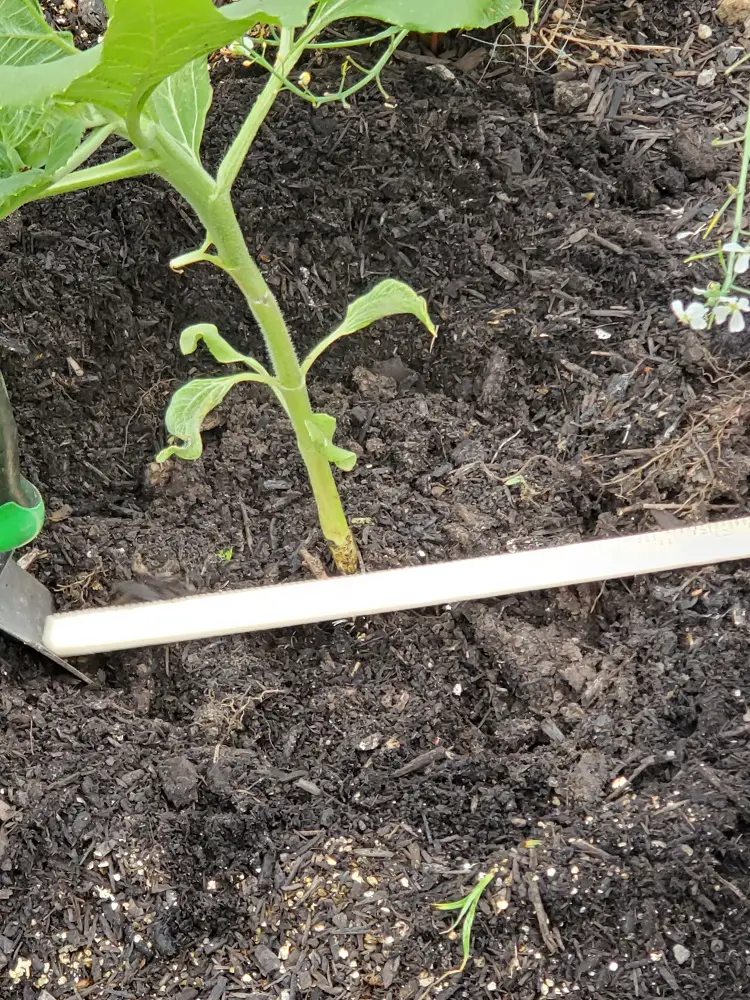
Size the hole to dig out the sunflower. 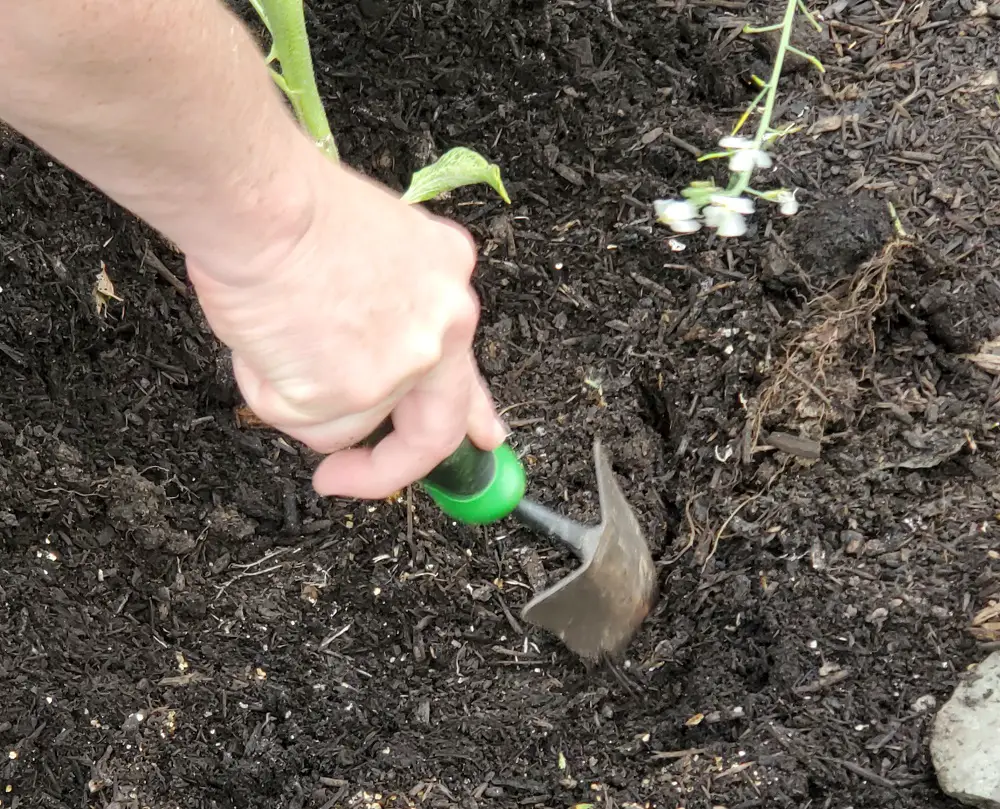
Dig around the perimeter of the base of the sunflower. 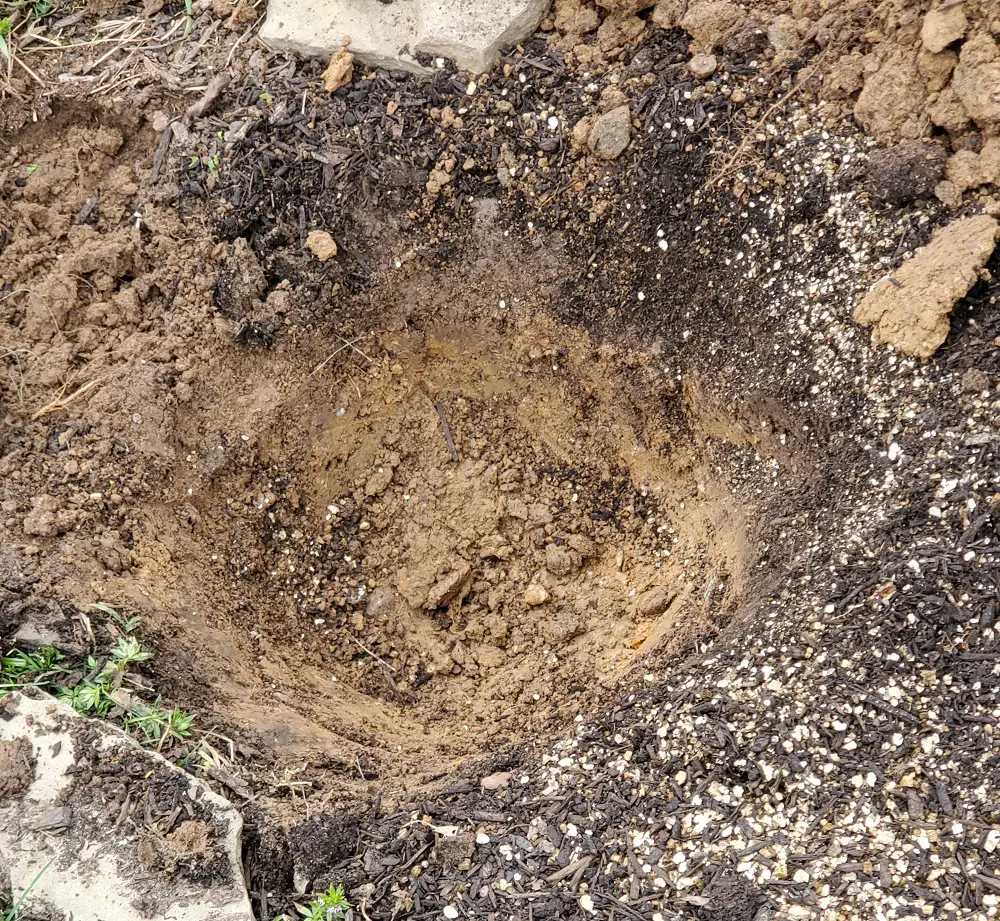
The hole should be a little larger than the root ball. 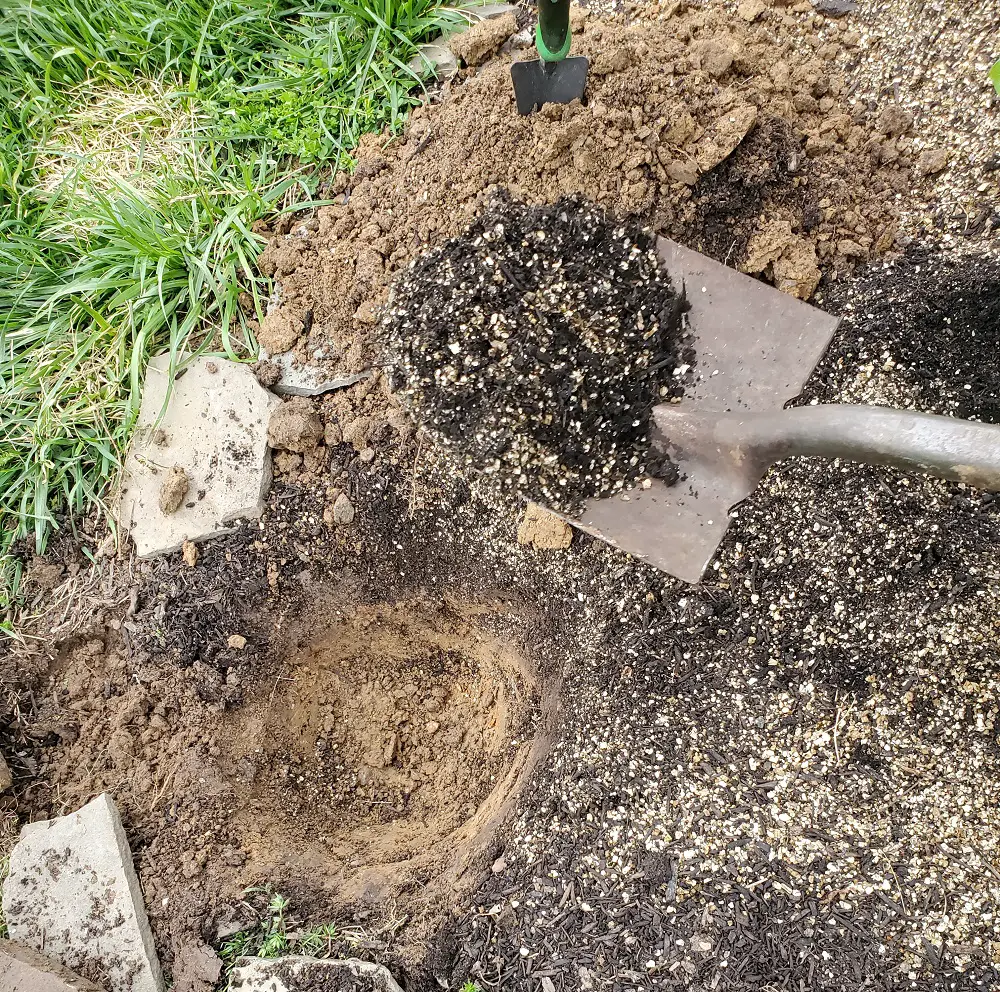
Replace clay soil with compost.
Step 4: Transplant the Sunflower
You will want to do your transplanting when danger of frost is gone and soil temperature is at least 55 degrees Fahrenheit. Your goal with the transplant will be to keep as much of the current root system intact and undisturbed as possible. For smaller, younger plants being transplanted from containers, this is not as important. However, in either case you don’t want the dirt crumbling away and exposing the roots to the air during the transplant. For older sunflower plants, this is a very delicate situation that adds the most risk to a successful sunflower transplant. For older plants, when you dig the sunflower out of it’s current location, you will want as wide a berth as possible and to include as many of the roots undisturbed and intact as possible. You should know the general diameter for the dig from using the trowel in the previous step. In order to claim as much of the tap root as possible, you will want to dig in a circular diameter, straight down. Gently go around the diameter, digging straight down, and prying back gently as you go. Go around the diameter a couple times, repeating this process, digging a little deeper down as you go. This will minimize the damage to the tap roots. Again, your goal is to have the largest undisturbed root ball as possible.
Next, pull the root ball out of the ground and move to the new location for transplant. You do not want to let much time pass between pulling it out of the ground and transplanting it as the dirt will begin to dry and will impact the delicate root systems as well as increase the risk of a failed transplant. Place the root ball into the hole. The rootball should easily fit into the hole as it should have a larger diameter than the diameter of the root ball. This difference will provide space for the compost. Next fill in around the root ball with compost that you have set aside from the previous step. Use the butt end of the shovel or trowel to pack the soil in around the perimeter of the root ball as you will want as much contact between the compost and roots as possible, otherwise the roots will dry out and will not anchor the plant.
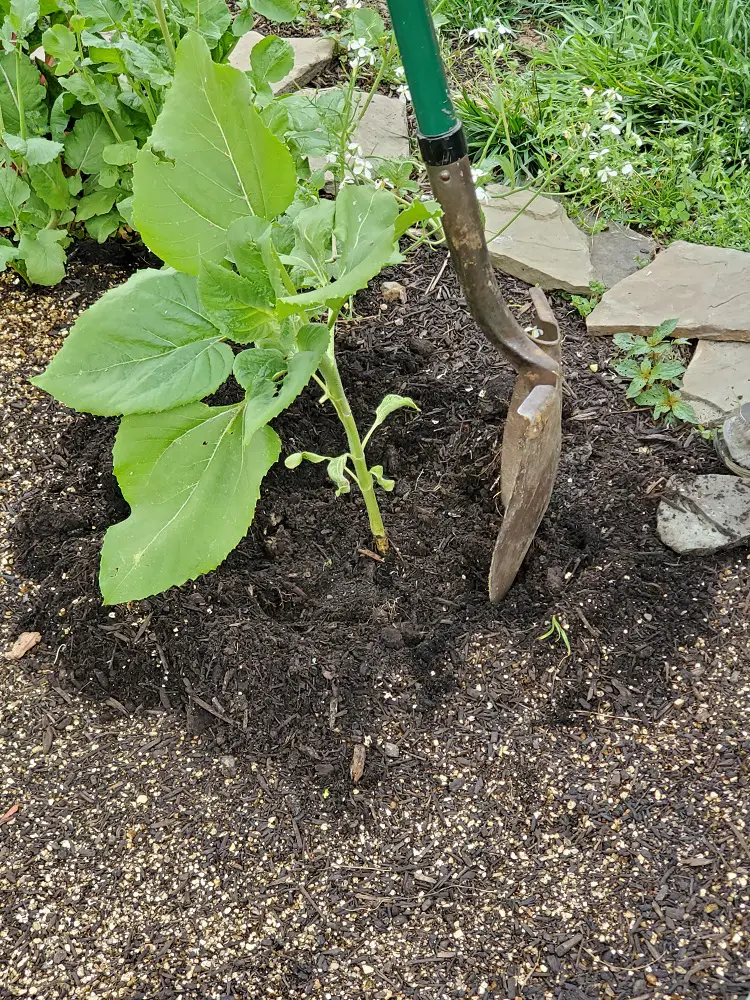
Dig out the sunflower wide and deep enough not to disturb the roots. 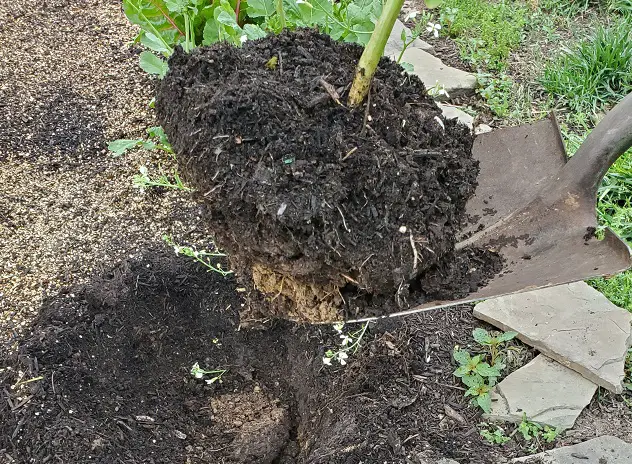
Move quickly to transplant the sunflower. 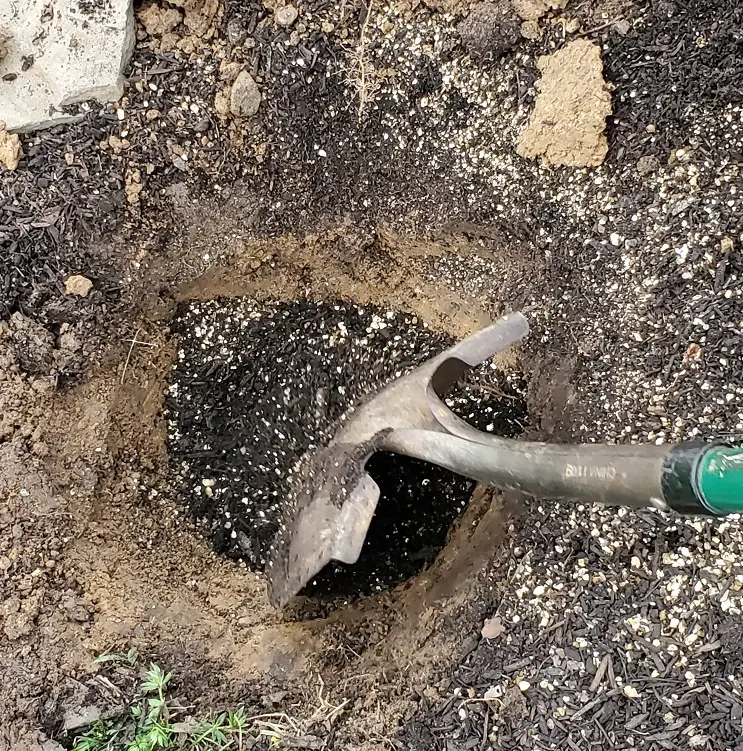
Add compost to the hole. 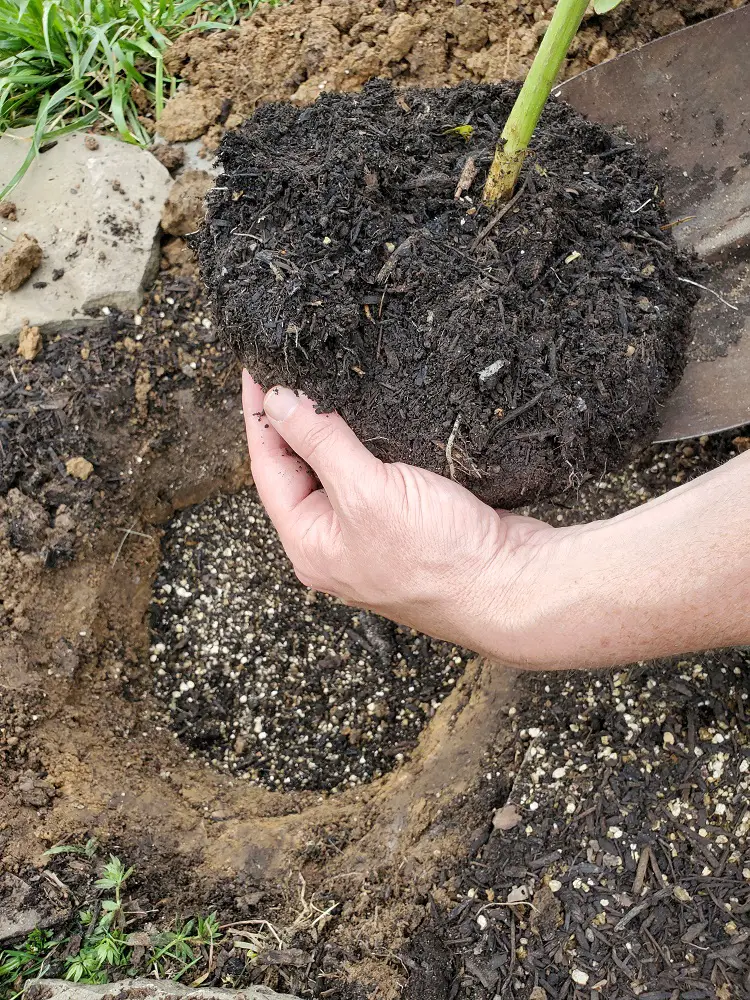
Gently place the sunflower in the new spot. 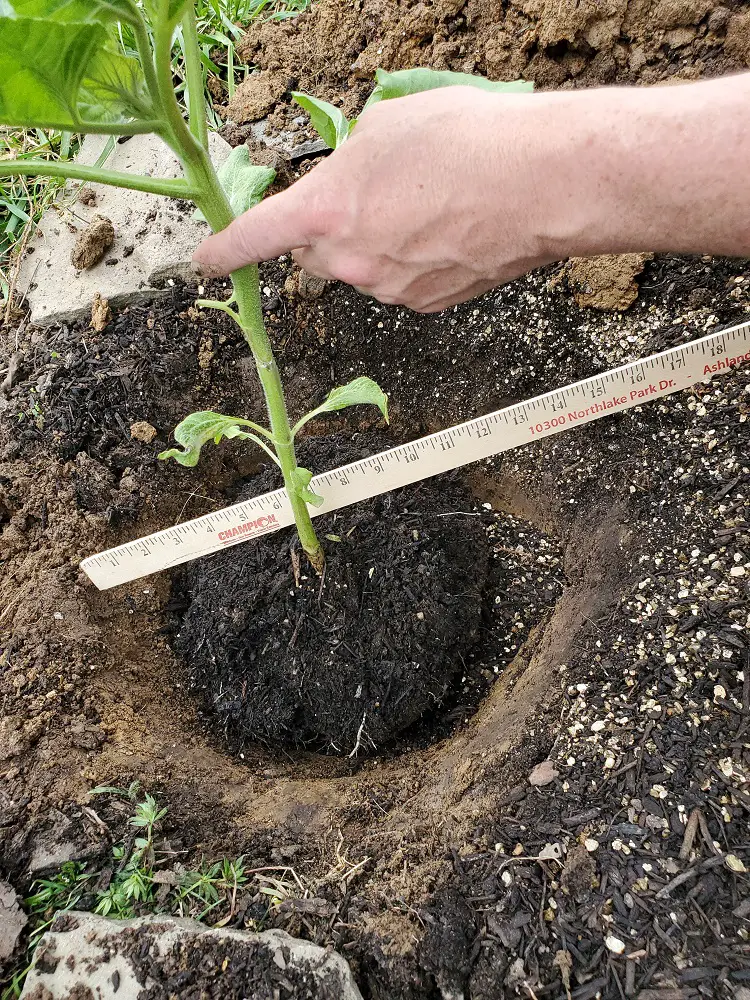
Measure to position sunflower upright. 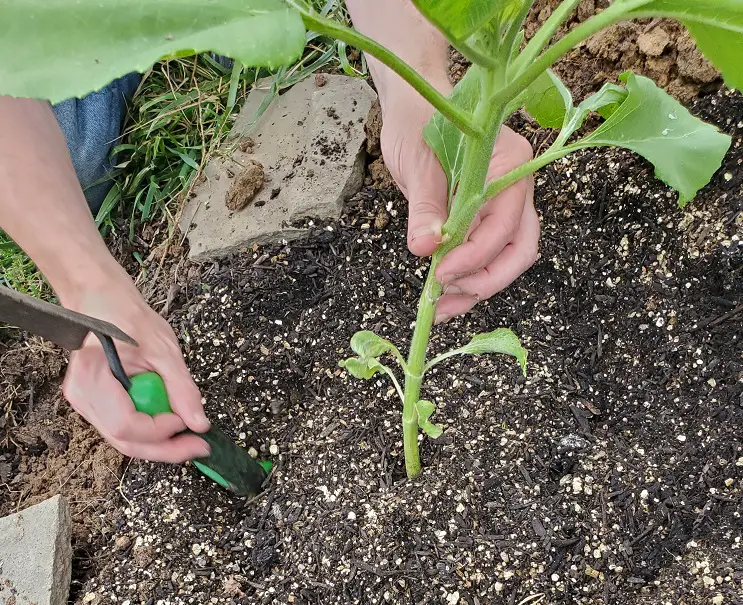
Use the end of the trowel to tap down the soil.
Step 5: Provide Water, Support, and Protection
-How Much to Water a Sunflower?
As soon as you finish transplanting the sunflower, it will need to be watered. Water your sunflower transplant thoroughly for the first three days. The water should not pool around the sunflower transplant, but should be watered enough to make the surrounding soil moist through and through. You may also continue to pack the compost in around the root ball using the butt end of a shovel or trowel during this step to ensure the roots come in full contact with the new compost and soil. You may continue to water the sunflower daily there-after, but don’t over-water, or let it pool to prevent disease or root rot. You may notice the sunflower transplant wilting slightly in the first three days, but don’t give up and keep it watered.
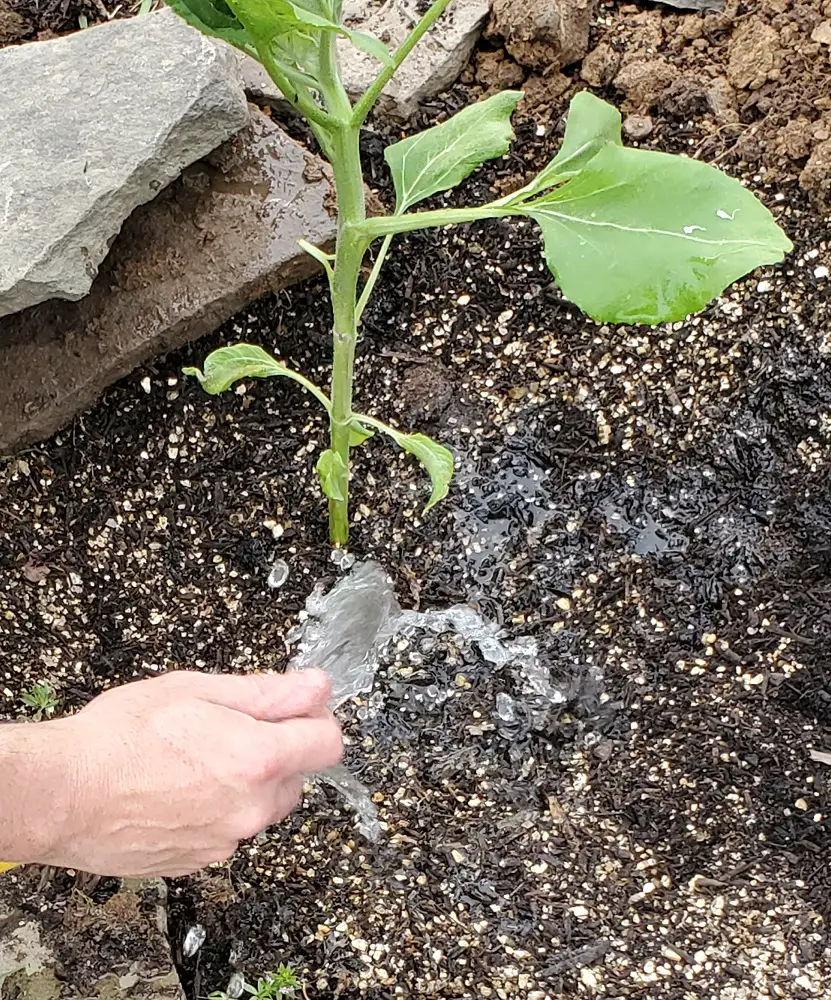
-How Much Support for a Sunflower?
For the taller sunflower varieties, they may require additional support. This is especially true if the sunflower is planted where the soil either doesn’t drain well, is too loose, and/or the area experiences windy conditions. You may use iron garden stakes to provide support along with garden twine to support one to many sunflowers growing in an area. You may also consider placing a trellis behind the sunflower for support. Support may include other sunflowers where planted in close proximity of one another (2-2.5 feet apart) and can lean on each other during a windy day. There is nothing more disheartening than to come outside after a storm to find the sunflowers leaning over, so it is important to think ahead and consider how your sunflowers will be supported.
-What Kind of Protection from Pests for Sunflowers?
As sunflowers start to grow, they will need to be protected from the hungry wildlife that may be in the area. Early threats to sunflowers include rabbits, snails, caterpillars, and grasshoppers to name a few. A hungry rabbit can decimate an entire row of new starts in one sitting if not adequately deterred. Grasshoppers, snails and caterpillars may not do as much damage, but can take out new starts one leaf at a time eventually killing the seedling. For physical protection, you should consider a lettuce / shade cloth that can go over the sprouts until they’ve reached a size where the rabbits and insects can not impact the young plant so easily. Rabbits will eventually lose interest in older plants. The threats to your sunflowers will keep coming as they mature.
There are a number of additional insects to be aware of including sunflower borers, sunflower beetles, sunflower cutworms, and sunflower moths. Each of these insects specifically zero in on sunflowers and the various parts of the plant. You may consider some organic pesticides to deter these insects to include a home-made spray made out of hot peppers. The scent alone should deter most insects and animals alike. You will want to spray twice a week to keep the pests away. Along with the pepper spray, you may try vegetable oil spray to deter these insects. Vegetable oil may include safflower, sunflower, peanut, or soybean. To add to your arsenal of deterrents, also try basic dish soap and water to keep the pests away.
Deer, birds and squirrels will also begin to show interest in your sunflowers as they begin to flower. For protection against larger wildlife such as deer, you may consider physical barriers such as physical protective fence, companion plants with thorny branches and natural physical/chemical repellents, garden netting, flood lights and sprinklers hooked up to motion sensors that turn on when deer and other animals are in the area. Animals also tend to avoid things that dangle and reflect light. Also consider noise making devices such as whistles and wind chimes. There are repellent spray products on the market that can be applied to the sunflowers and other plants to keep the deer away as well. Click here to check the most recent prices for some of these brands on Amazon.
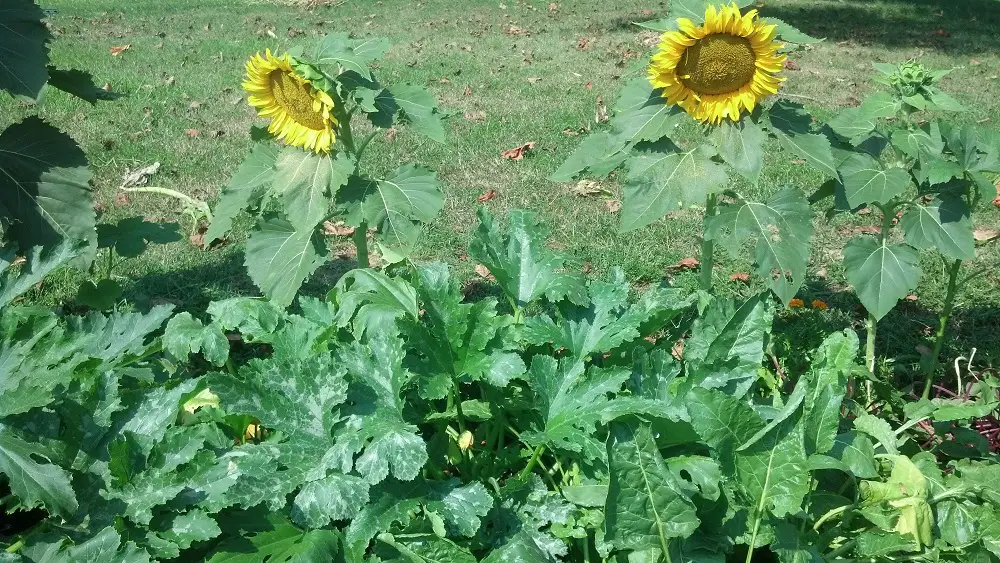
Conclusion
The Grow Monster certainly enjoys sunflowers and knows that transplanting them from one location to another may be required from time to time. Be sure to know the risks associated with the transplant. Also, pick a location with adequate sun, and prepare a larger-sized hole with nutrient-rich compost available during the transplant. Don’t forget, you will want as much of the sunflower’s rootball intact as possible. Following all this up with adequate water, support structures, protections against the wildlife, and you too will be able to enjoy these amazing plants we call ‘sunflowers’. Share your experience transplanting sunflowers in the comments below.

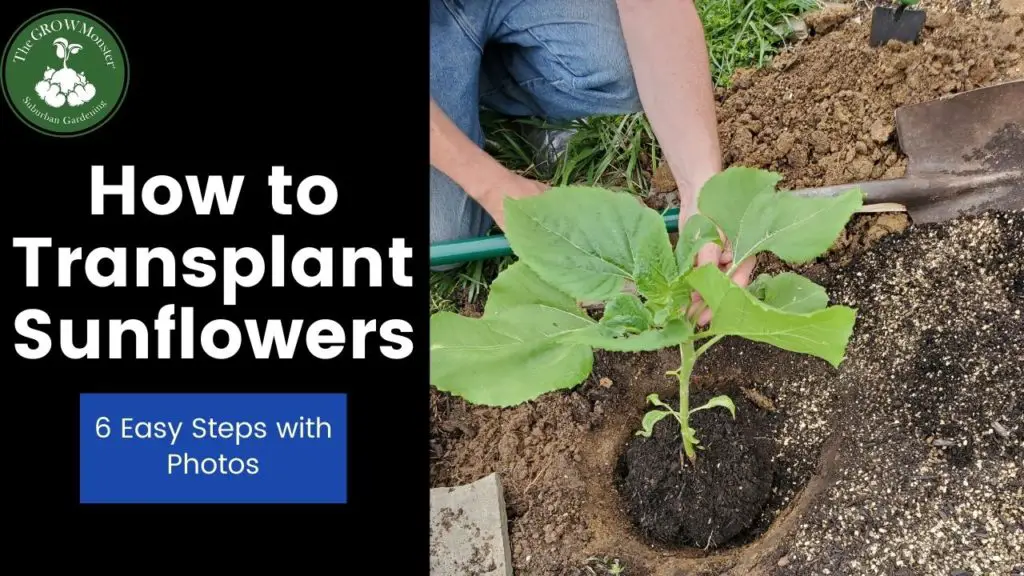
Pingback: Pollinator Friendly Plants - The Grow Monster
Pingback: Do Pineapples Grow on Trees? - The Grow Monster